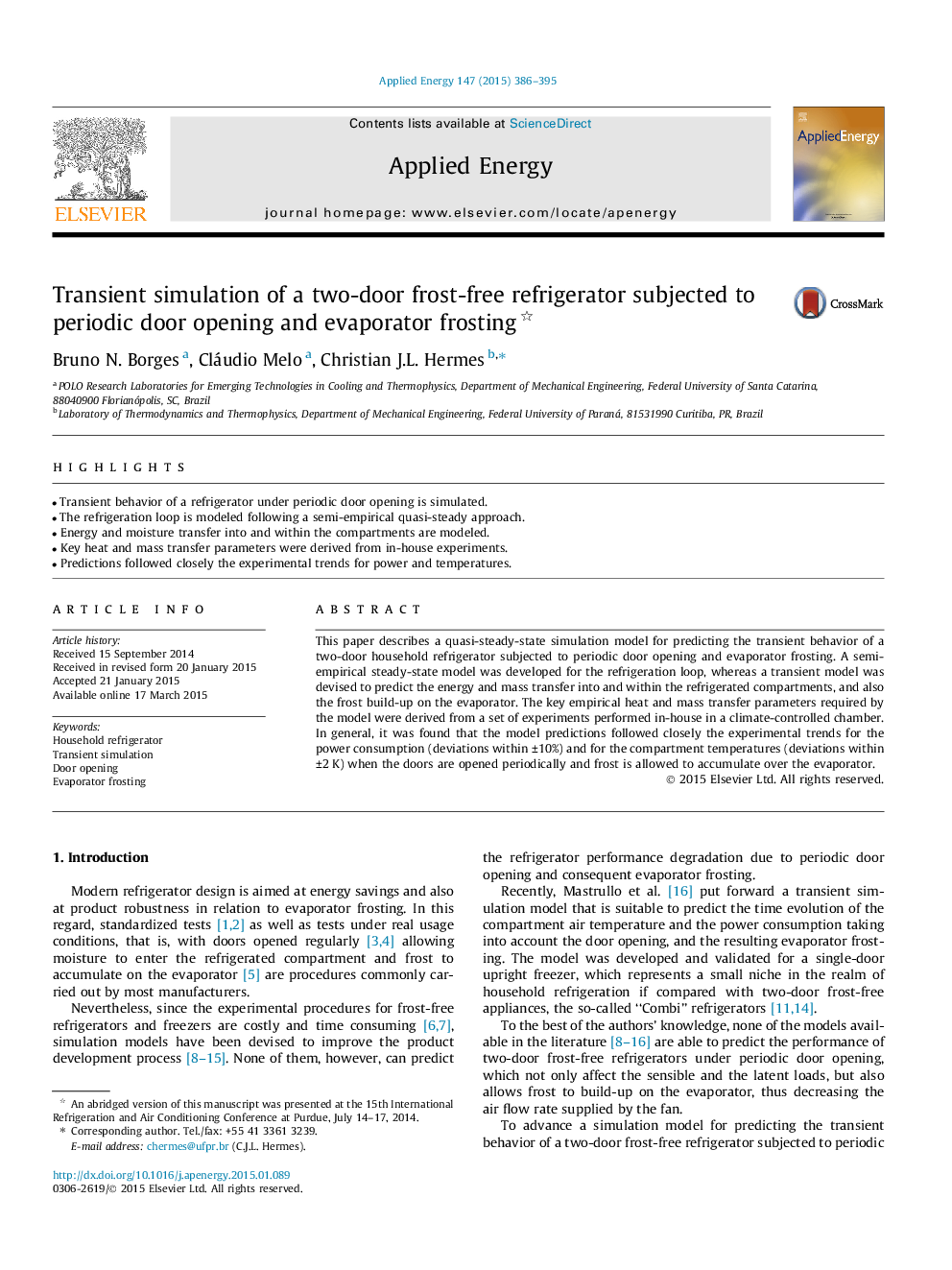| Article ID | Journal | Published Year | Pages | File Type |
|---|---|---|---|---|
| 6687472 | Applied Energy | 2015 | 10 Pages |
Abstract
This paper describes a quasi-steady-state simulation model for predicting the transient behavior of a two-door household refrigerator subjected to periodic door opening and evaporator frosting. A semi-empirical steady-state model was developed for the refrigeration loop, whereas a transient model was devised to predict the energy and mass transfer into and within the refrigerated compartments, and also the frost build-up on the evaporator. The key empirical heat and mass transfer parameters required by the model were derived from a set of experiments performed in-house in a climate-controlled chamber. In general, it was found that the model predictions followed closely the experimental trends for the power consumption (deviations within ±10%) and for the compartment temperatures (deviations within ±2 K) when the doors are opened periodically and frost is allowed to accumulate over the evaporator.
Related Topics
Physical Sciences and Engineering
Energy
Energy Engineering and Power Technology
Authors
Bruno N. Borges, Cláudio Melo, Christian J.L. Hermes,
